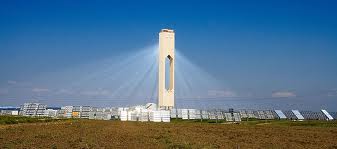Investing in solar energy plants is not easy, given the multiple risks that this new form of energy entails. Despite solar energy capacity growing by more than 50% CAGR over the last decade, solar energy still accounts for less than 1% of the global energy demand. The industry is relatively new though with the massive fall in costs, it has become a more mainstream industry.
Activ Solar faces Crimea FIT abolition
Solar energy is being promoted by almost every country through different incentives and subsidies. Feed in tariffs are one of the most  popular ways to promote solar energy and is followed by most European countries. Germany has installed the largest solar capacity in the world at 35 GW, using feed in tariffs which have declined every year. Ukraine also used the same strategy to promote solar energy. Activ Solar, which is an Austrian company with close ties with local Ukrainian politicians quickly won most of the solar projects on offer. The company built almost 300 MW of solar PV plants in the Crimea region of Ukraine, taking advantage of the Euro 34 cents/KwH. However, with Crimea seceding from Ukraine and joining Russia, Ukraine government is unlikely to pay the high FITs to Crimea. Activ Solar is now left in the lurch, as its cash flows are in danger. If the Russian government does not honour the FITs, the best that the company can hope to get is wholesale electricity tariffs which would be very low compared to the FITs.
popular ways to promote solar energy and is followed by most European countries. Germany has installed the largest solar capacity in the world at 35 GW, using feed in tariffs which have declined every year. Ukraine also used the same strategy to promote solar energy. Activ Solar, which is an Austrian company with close ties with local Ukrainian politicians quickly won most of the solar projects on offer. The company built almost 300 MW of solar PV plants in the Crimea region of Ukraine, taking advantage of the Euro 34 cents/KwH. However, with Crimea seceding from Ukraine and joining Russia, Ukraine government is unlikely to pay the high FITs to Crimea. Activ Solar is now left in the lurch, as its cash flows are in danger. If the Russian government does not honour the FITs, the best that the company can hope to get is wholesale electricity tariffs which would be very low compared to the FITs.
Solar Investment in Politically Sensitive Regions
Investing in politically sensitive regions is always tough for any industry, but it is ever tougher for new industries. Solar energy investing should always be dispersed across geographies. The reason is that most countries are highly risky in terms of their political stability. Even large rich European countries such as Spain have made retroactive cuts in their solar subsidies, leading to large losses for solar energy developers. Countries such as Czech have almost been bankrupted by ill thought of solar feed in tariffs and they too made drastic retroactive cuts in subsidies.
A lot of interest is being generated in investing in solar energy plants in Africa with most of Europe being saturated. Given that Africa is energy starved and solar energy is abundant in Africa, there is a lot of enthusiasm amongst solar investors for this continent. However, investors should have a risk management plan in place before trying out new frontiers. They should diversify their solar plants across countries and regions. Unless they do that, they could run into major problems like Activ Solar is facing due to its overdue concentration in Ukraine and Crimea.
Google+


Feed- in – tariff proved risky, and so many countries has to curtail subsidy. Lowering cost of solar PV at a faster rate compelled to withdraw feed- in -tariff system. Now the cost of solar PV has drastically come down and capital expenditure has substantially reduced. Earlier higher investment was made for same size of project.